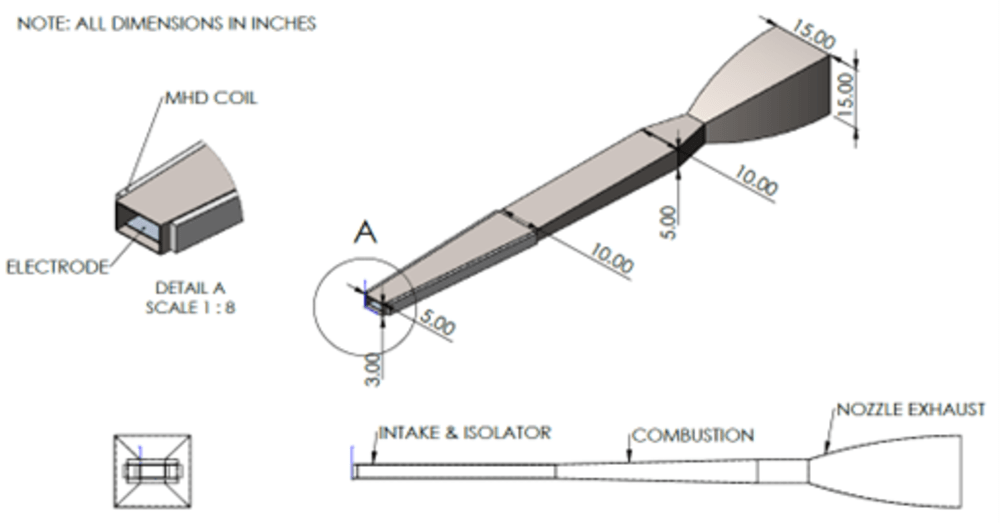
Using the plasma control technologies from Tokamak fusion reactors, my new scramjet engine design can propel an aircraft from a runway and accelerate to hypersonic speeds (> Mach 6) using hydrogen or other combustible fuels. It can also replace rocket boosters as a launcher or spaceplane for low orbit satellite launches or crew/payload deliveries to space stations with this air-breathing engine. When in space, a small tank of liquid oxygen will be used with the hydrogen or pure hydrogen peroxide can be used for maneuvering and reentry.
The magnetic coils will be made from graphene nanoribbons (GNR), which have the highest specific current density of all materials. I have a patent pending for the commercial production of GNRs at room temperature. I am also researching turning GNRs into a room-temperature superconductor, which will have many other applications besides (clean) hypersonic transport.
The Mag-Jet Engine illustration shows a lab-size design with MHD coils around the Intake and Isolator to accelerate the ionized oxygen to the Combustion section. There will be different types of coils around the entire engine to control the speed of ionized oxygen, compress and combust with hydrogen, extract electric power from the high-energy exhaust gas to power all the coils, and shape the exhaust gas into a more efficient jet thrust. Nitrogen will be diverted from entering the combustion section to minimize energy losses in heating the N2 and the formation of NOx.
The cost of GNRs will be low when using natural gas as the feedstock and producing them at room temperature. GNR will also be an excellent reinforcing filament for structural composites for aviation, aerospace, marine, and automotive. GNR will be superior to steel rebars, aggregates, and other reinforcing additives in concrete. DOD is reviewing its use in blast-resistant buildings.
Using cold spray additive manufacturing (CSAM), GNR can be combined with titanium powder to produce superior titanium metal matrix composites with higher mechanical properties, higher thermal and electrical conductivities, and improved fatigue properties. The Mag-Jet Engine structure will be built using these Ti-GNR metal matrix composites. A proprietary process will produce a thin layer of titanium-carbide (Ti-C) on the interior surfaces of the Mag-Jet Engine in the event of plasma instabilities from magnetic fluctuations. Ti-C can sustain 3000°C. GNR in Ti or other metals will minimize/eliminate hotspots from its high thermal conductivity, therefore, no stress concentration to cause warping or high stresses in concentrated areas.
-
Awards
-
 2022 Top 100 Entries
2022 Top 100 Entries
Like this entry?
-
About the Entrant
- Name:Karl Young
- Type of entry:individual
- Software used for this entry:SolidWorks
- Patent status:pending

